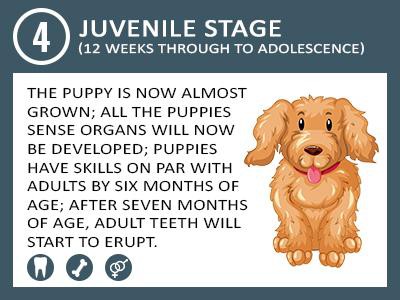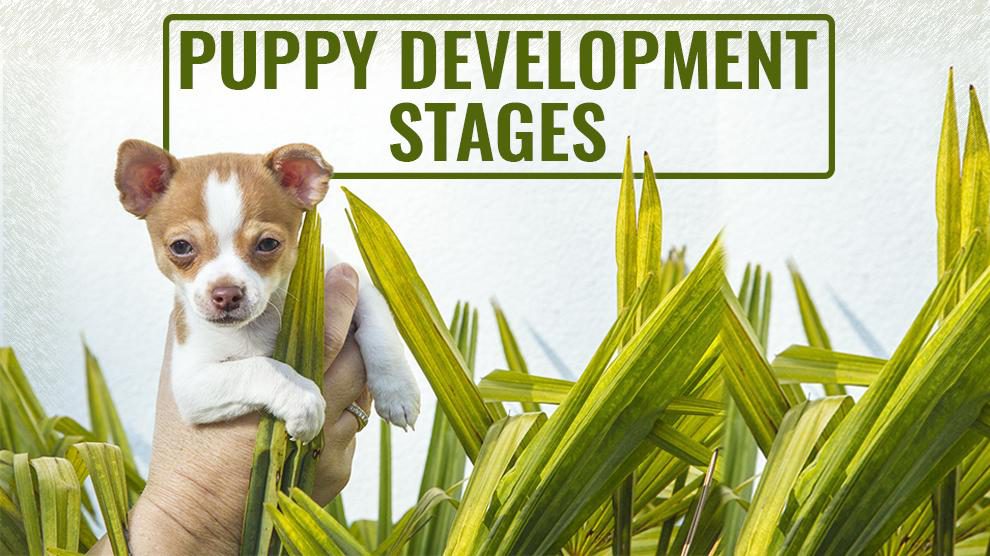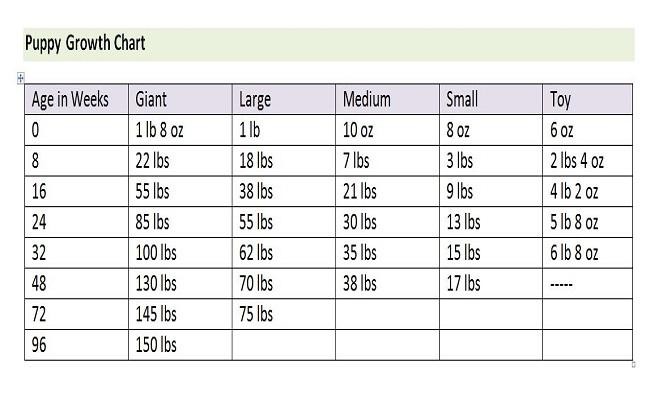Dog Pregnancy Calculator And Timeline
The ‘Research’ clearly proves that growing puppies require different nutritional requirements than adult dogs. In order to give your puppy the most favored start towards a healthy and long life, it’s necessary to design a diet that’s particularly created for puppies.
The exact length of this puppy development stage will depend on the puppy’s size with bigger breeds taking more time to mature than tinier breeds.
A puppy needs regular, appropriate, and proper socialization so that it can grow into a well-mannered adult dog.
7 stages of puppy development
Training experiences and early socialization leave a lasting, positive impression on a puppy. It actually helps the pup to grow into a healthy and happy dog.
The puppy development stages consist of five different stages from Birth to Adolescence.
- The Neonatal Period
- The Transitional Period
- The Socialization Period
- Fear Period
- Juvenile Period
- Delinquent Period
- Adolescence
Let’s try to understand the stages in detail.
1. The Neonatal Period (Birth to 2 weeks)

Throughout this period puppies are dependent on their mothers for survival.
At this stage, most puppies spend the time either eating or sleeping. Puppies’ ears and eyes are closed but they are sensitive to smell and touch.
They open their eyes around a fortnight’s time after birth. But, puppies rarely respond to moving and light stimuli until the main transitional period.
Movement of Puppies in The Neonatal Period
Neonatal puppies always have very limited movement. They are capable of a very slow crawl. These puppies are not yet ready to support their body weight.
During this period, these puppies will depend on their mother. If left alone, a puppy will try to crawl and vocalize, moving its head sidewards. The puppies have little capacity to manage their body temperature. They rely on their littermates and mother for body heat.
In this period, the puppies get their energy by suckling. Defecating and urinating are managed by the mother constantly licking the anogenital section. She keeps the crate clean by consuming any waste products.
Handling puppies for a brief period mainly during the first 14 days after their birth is considered good.
At Birth
Your pet puppy will only be ready to crawl.
Up to 1 day
Puppies should suck their mother’s milk to consume colostrum. Colostrum contains other immune substances and antibodies that safeguard newborn puppies from all major diseases.
14 days
Puppies will now start to open their ears and eyes, but hearing and vision can be really poor at first. Start the first worming treatment.
2. The Transitional Period (between 2 and 3 weeks)

- This is a major period of fast development. Your puppy will exhibit adult mannerisms such as wagging its tail or growling.
- At this stage, puppies will respond to movement and light as they start to open.
- They now start to react to sound as their ears open. Puppies will now start playing with their littermates.
- The puppy will do both, continue to suck from its mother and show an eager interest in solid food. They will learn to lap water from a bowl.
- All mother dogs will stimulate the anogenital section by licking. Puppies, in general, need stimulation to pass feces and urine.
- At this stage, puppies will pass urine naturally and anogenital stimulation is not needed anymore.
3. The Socialisation Period (Between 3 and 12 weeks)

- One of the most important periods in a dog’s life, a puppy will learn almost all the much-needed skills to sustain their entire life.
- The puppies learn most of the social skills in this period. It is necessary to get as much exposure as possible. It may include situations, objects, and people they might encounter sooner or later.
- You can leave your puppy alone for really short periods. Introduce your pet to the experience of traveling in a vehicle and visiting a vet.
- At 3 weeks of age, most puppies will react to sounds by barking or walking towards the source of the sound.
- Like humans, dogs do have two sets. The’ deciduous teeth’ are called ‘milk teeth.’ These teeth will start to form at this stage.
From 6 to 9 Weeks
- The first immunization shot is due after six weeks. The second vaccination is between 2 and 4 weeks after the first shot.
- Your puppy will enjoy small five meals a day.
From 8 Weeks Onwards
- From eight weeks, they leave their littermates and mother. You should inquire with your breeder about what worming treatments and shots they have had.
- Consult a vet and discuss neutering, puppy parties, and vaccinations before you bring home the puppy. At this stage, the puppy is ready for socialization.
- You carry them with you and do not allow them to enter places where other dogs could have been.
8-12 weeks
- The puppy meals are now three meals daily.
- The puppy is due for the second vaccination. Talk to your vet and decide how many days you should be patient before your puppy can interact with other dogs.
4. Fear Period (8 weeks to 15 weeks)
This is an in-between stage where your puppy will stride before stepping to achieve something. Not all dogs experience this period. However, most of the young puppies appear to be afraid of their boundaries. You may start to notice your puppy is terrified at some humdrum activities. Don’t panic. It’s time to put your puppy into a regular training program which will solve this problem almost completely.
You may notice the following symptoms:
- Reluctant to do a regular activity
- Trembling before any such activity
- Start to hide needlessly
- Backing and running away
- Passive urination
Do not neglect any of these symptoms. If left unattended at this stage there is every possibility that your puppy may end up with aggression problems.
Three things you can do as a dog parent:
- Never leave your puppy unattended.
- Start intense socialization training.
- Introduce him to new places, new things, and new people regularly.
5. The Juvenile Period (12 weeks through to adolescence)

- The puppy is now almost grown. All the puppy’s sense organs will now be developed. They will have a slow rate of growth.
- The juvenile period is not completely over. They still need puppy food. This duration can vary from 18-24 months for larger breeds up to 1 year for small dog breeds. At this stage, your puppy will continue to grow and more physiological changes will happen.
- Puppies have skills on par with adults by six months of age. After seven months of age, adult teeth will start to erupt.
- You should put your puppy in early socialization training and puppies have zero or a short span of attention.
How sexual maturity is measured in dogs?
- Sexual maturity is marked by the capacity to ensure fertile mating and the first season in females. Sexual maturity takes place at around 6 or 7 months.
- These puppies are still considered juveniles only.
- This is the right time to discuss neutering issues with your vet.
6. Delinquent Period
This is another in-between period of behavior change. During this period of 4 to 10 months, you should bring some basic rules to the training on biting and chewing behaviors. However, most puppies during this period will show the behavior of disobedience and rough play.
To prevent any mishaps and destruction of things, you can do the following:
- Try to get some interesting chew toys that will get their attention as redirection is the key here.
- Try giving them proper training on the scale of their bites by uttering some warning sounds to alert them and isolate them only for some time. This will send signals of warning. If your puppy bites again, repeat the process multiple times until he knows biting is not appreciated.
- Give them consistent and routine training on behavior.
- This will make your puppy grow to be a protecting, safe, and well-behaved adult dog.
7. The Adolescent Period or Adolescence

Puppies mature depending on the size of their breed. Faster maturity is achieved by small dog breeds.
In small dog breeds, the adolescent period will last for a year. Mature dog’s age at around four dog years.
How to recognize adolescence in your puppy?
After reaching adolescence, you may see these changes in your dog.
- Excessive mounting behavior
- Leg cocking
- Wandering
- Disobedience
- Improper socialization
- Very limited concentration
- A bundle of energy
- Violence or aggressive behavior
How to Handle Your Adolescent Dog?
Natural instincts are pushing your pet to get out, see off competition, and leave their scent. You should ensure that your dog does not get into bad situations with your neighborhood dogs.
Increase the Training
- Never give up on your dog’s training. It is important to give them plenty of rewards and praise to increase their self-esteem.
- Adolescence will never last for a lifetime, so don’t give up.
Fighting is Common
- When dogs challenge, a fight is imminent. The fight does not last for more than a couple of minutes. Adolescence is a learning phase in a dog’s life.
- Do not isolate your dog from others at this stage.
- Socialized puppies know how to handle the situation without escalating the tension. They will just “mock bite.”
Puppy Weight Guide
If you are not sure your canine is correct weight, you should check for these signs
- Visible ribs or not- A 24-week old puppy should not have its ribs visible to the naked eye. Racing dog breeds may show three ribs or less; this is normal.
- Tuck- Check out your puppy. If your dog’s tummy slopes so that it disappears between his hind legs, your dog is healthy.
- Check his waist- If your puppy’s sides go in before his rump and hips, then he is normal.
- Feel the ribs- When you press your puppy’s sides, you should feel your dog’s ribs. If your dog is too fat, you will find it hard to feel your dog’s ribs.
- Thin puppies need a more balanced diet. Contact your vet for a detailed feeding plan.
- Fat puppies need to slim down.





















